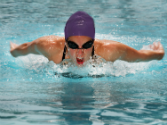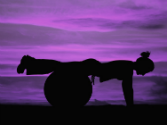 Did you ever think about the fact that about 40% of the time that we are walking around, we are on one foot? Balance is crucial, regardless of how athletic you are. Just think about what happens as we get older, and our balance is not as good as it once was. We begin to take shorter strides to compensate for our lack of balance. Hence, one reason for the shuffle that we sometimes see in elderly people. The balance is not as good and therefore stability is off. It isn’t too hard to see why balance is such a crucial component for fitness, too.
Did you ever think about the fact that about 40% of the time that we are walking around, we are on one foot? Balance is crucial, regardless of how athletic you are. Just think about what happens as we get older, and our balance is not as good as it once was. We begin to take shorter strides to compensate for our lack of balance. Hence, one reason for the shuffle that we sometimes see in elderly people. The balance is not as good and therefore stability is off. It isn’t too hard to see why balance is such a crucial component for fitness, too.
Take running, for example. When we run, we are never on two feet at the same time. Some of the time we are airborne, and some of the time we are on one foot. If you think qbout it, part of balance is actually relaxation. I read an article recently which pointed out how surfing or paddle boarding are good examples of how essential relaxation is to balance. The first time you try getting (and staying) on the board, a tremendous amount of effort and energy is used to stay upright. The more you try, the more relaxed you become, and the more your body learns to anticipate the reaction to your equilibrium in that new environment. Finally, the better at it you will become. We can also see how that applies to other sports, like running, as well. The better your balance becomes, the more relaxed you will run, and the more efficient you will become in that relaxed state. So anything we can do to improve our balance will also improve our athletic pursuits.
What can we do to improve balance? I asked this question to Alan Tyson, physical therapist and owner of Architech Sports. His answer surprised me. He said there are a lot of little things we can do that we probably never thought of doing regularly. Stand on one foot for a minute at a time. Then close your eyes and try it for 30 seconds. This can be done twice a day at the bathroom sink while brushing your teeth. A good balance exercise that is easily done at home is the Single Leg Reach. To do this exercise, stand on one leg and bend at the knee. Squat with that leg, and reach toward the floor with the opposite arm. Repeat this for one minute and then do it with the opposite leg. As you get better at this, you can use a foam pad (to stand on) and challenge the balance aspect a little more.
Another surprise for me to learn was that we can improve balance by doing strength exercises without machines on occasion. Alan suggests doing exercises that use your whole body like the Eight-Count Body-builder or Single Leg Squats. Weight machines take most of the burden of the balance for us, and we become accustom to that type of workout and less accustom to using our own balance as a part of the exercise.
Some runners believe that barefoot or minimalist running also improves balance. They point to the fact that our $120 running shoes and our nice evenly paved roads act almost as a crutch and don’t give us the chance to work on our balance. Kenyan runners, for example, train on dirt roads, and are often barefoot. All of their lives, they have had to incorporate balance and stability into their running in a way we runners in the West have never had to. And they are typically pretty fast runners!
By simply incorporating a few balancing exercises into our daily lives though, we can improve our balance in a big way, and our performance will be better as well. I don’t know about you, but I am all about keeping things simple. I just need to find more ways to help with the balancing act which is my life!





Speak Your Mind